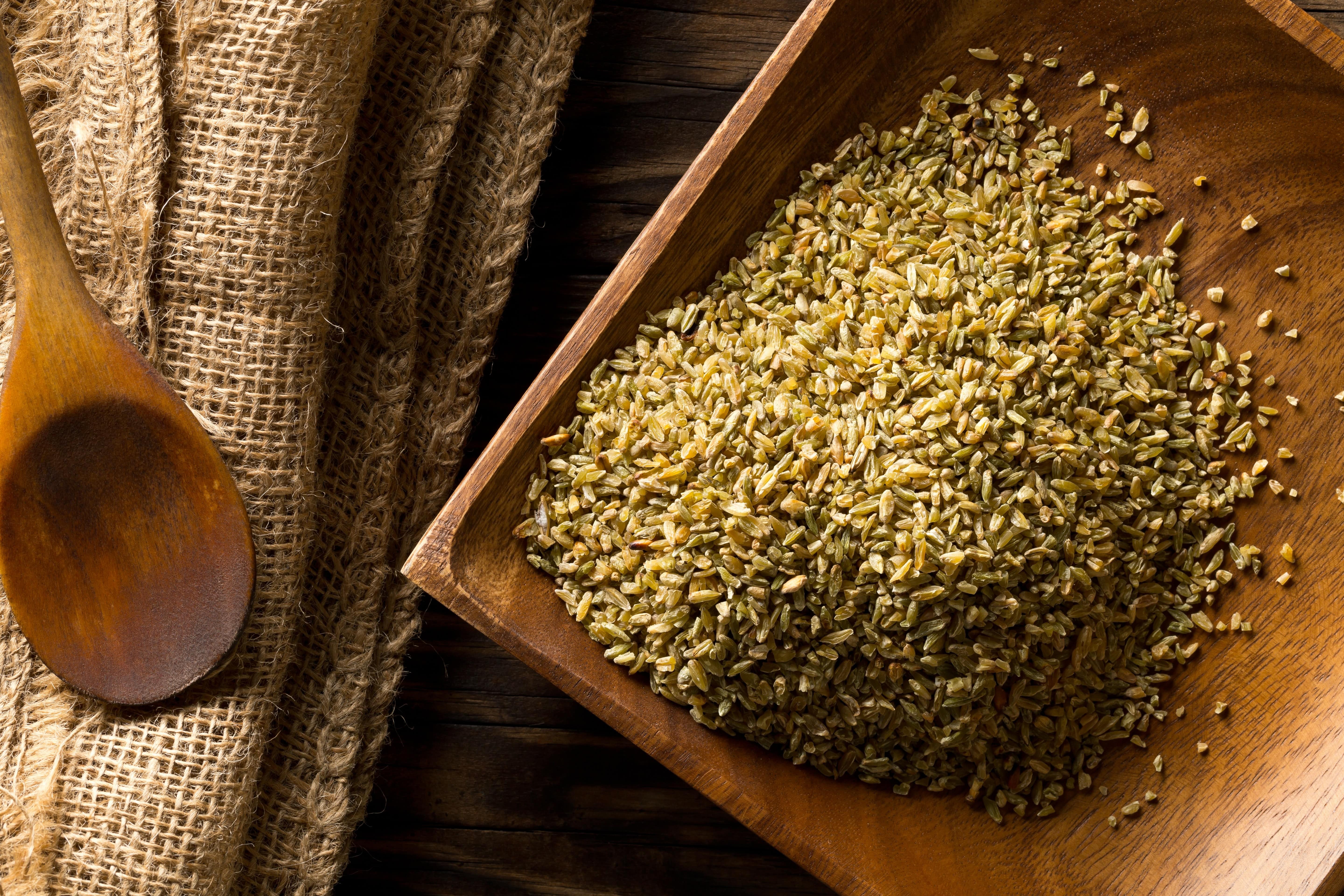History & Heritage
3.26.2020
Focus on freekeh, the Middle Eastern cereal that will dethrone quinoa

Quinoa, bulgur, buckwheat… That’s in the past! In 2020, we’re making room for freekeh, for our upcoming healthy yet tasty meals. This cereal, known for centuries in the East, struggles to establish itself in the West. However, it has many qualities, one being its versatility: it can be eaten cold in salads or in many hot dishes. Let’s take a closer look at this variety of durum wheat with the nutritionist Alexandra Retion.
Nicknamed “green wheat”, freekeh is thought to have appeared between the 12th and 13th centuries in the Fertile Crescent region of the Middle East. Legend has it that farmers discovered this almond-tasting grain with while saving a crop ravaged by fire. Whether that is myth or reality, we do know that freekeh belongs to an ancient variety of durum wheat. And if it’s green, it’s because it’s harvested before it’s ripe. But what is freekeh worth in terms of nutrition? And how should we consume it? Alexandra Retion, food specialist and author of the blog www.diet-paris.fr sheds some light on the subject.
Unexpected benefits
The benefits of freekeh are numerous, to the point where it scores more points for nutritional qualities than rice or even quinoa. According to the dietician-nutritionist Alexandra Retion, “the fact that freekeh is harvested before ripening gives it interesting nutritional values, similar to germinated seeds. It is rich in minerals such as zinc, iron, potassium and calcium.” Together, these micro-nutrients help fight cellular aging, reduce fatigue, strengthens bones and keeps the heart healthy. And that’s just the half of it!
Freekeh is also rich in protein and fibre. “There are 15g of protein for a 100g serving compared to 14g for a serving of quinoa. By adding legumes or nuts, vegetarians will reach the necessary protein intake. As for fibre, freekeh contains 10 to 13 g for a 100 g portion. An commendable level, when we know that the daily needs are around 25 to 30 g,” notes the expert. Therefore, this cereal also regulates transit and promotes the feeling of satiety. But that’s not all, the food and nutrition specialist specifies that “this richness in proteins and fibres imparts freekeh with a low glycemic index, ideal for diabetics or people watching their weight.” Another advantage of “green wheat”: it is low in gluten and therefore more digestible!
Healthy but tasty recipes
So what recipes can be concocted with freekeh? If you’re looking for a veggie dish, Alexandra Retion suggests a revisited tabbouleh recipe with freekeh as the base, coral lentils, leek fondue, grated carrots, onion and pomegranate seeds, all heightened with coriander and mint.
Otherwise, there is also the traditional “Chorba freekeh.” This traditional North African soup, made with pieces of lamb, tomatoes, coriander, onions and mint, is usually eaten during the Ramadan period. “It rehydrates and brings essential nutrients to the body after fasting,” says the expert.
Where is freekeh found?
Imported from Algeria, Syria, Lebanon or Palestine, freekeh can be found in many oriental grocery stores, in organic shops or on the internet. You will find it in pouches ranging from 250 to 850 g, under the name “Freekeh Bulgur.” As for the price, it depends on the quality of the product. Regardless, “green wheat” remains quite expensive. And for good reason, as it is harvested only once a year, in May. Beware of imitations! Even raw, the grain must remain tender when bitten into and the cooking water should turn cloudy or slightly grey.
Thanks to Alexandra Retion, dietician-nutritionist and author of the blog www.diet-paris.fr.
popular

